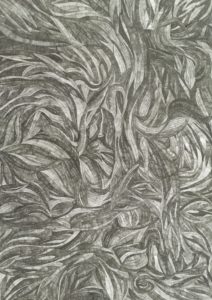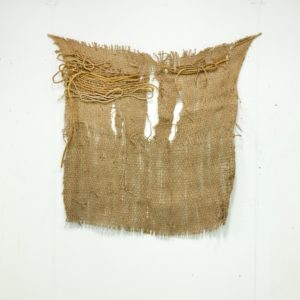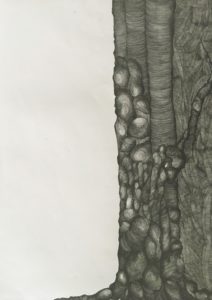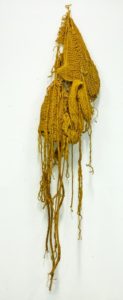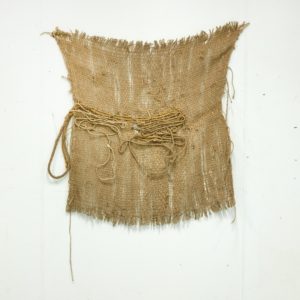Witness Weaving Labyrinths at Triveni till May 31
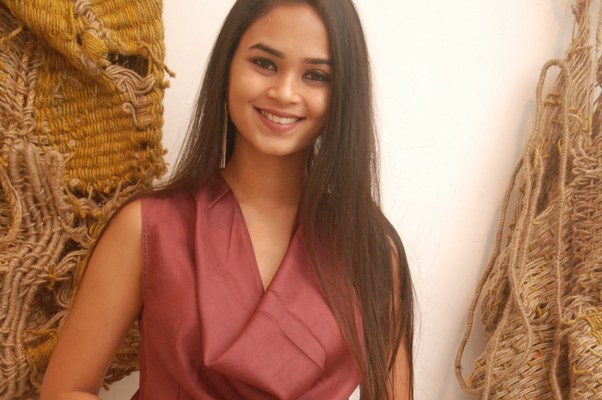
Twenty two-year-old artist Nandini Hasija has put up her first Solo Exhibition, Weaving Labyrinths, at the Triveni Gallery, Triveni Kala Sangam, New Delhi.
The exhibition , open till May 31, is an autobiographical journey that attempts to explore her identity based on the relationship she has with her adoptive mother.
As Nandini says, “My biological mom abandoned me while my adoptive mom gave me all the love and respect a mother can give her child. At times, when I rue the fact that I was abandoned, she tells me don’t worry, Goddess Sita was abandoned too.”
The exhibition, featuring 15 drawings (of graphite on paper) and 5 sculptures (of self-woven jute), is in a way is Nandini’s tribute to her adoptive mother, a gutsy woman who not only brought her up well, but also saw to it that the girl never dwells in self-pity or depression over the treatment meted out to her by her biological mother. “My mom nurtured me with all the love and care,” she says.
The exhibition also is an autobiographical journey in which Nandini is trying to find herself through her art works. Each of her works is an attempt to explore the development of her own identity based on her relationship with her adoptive mother.
While explaining her art making, Nandini says, “This process of (art) making and conceiving grants me a maternal relationship with the art object that mimics the relationship that I have with my own mother. It’s the act of weaving myself through relationships – those which are mine and those which I create, that gives me a secured yet dual sense of self.”
A striking feature her works is an attempt to develop images of intertwined lines and forms from two dimensional surfaces to three dimensional surface areas. The process of making these drawings is satiated by a sense of immediacy and repetition which are two characteristics also maintained in the weaving and making of the soft sculptures. The two lines of work are different from one another in their medium and form, but the artist has been able to unify the two contradictory forms by bringing them together.
Each of the 15 drawings is a combination of lines and their relationship with each other. The lines intertwine sometimes moving towards each and sometimes moving away just as human relationships intertwine, sometimes together and sometimes moving away.
The five jute sculptures depict the next stage of the artist’s journey. Here jute has been used to depict the shifting of the identity between the birth identity and the adoptive identity based upon how the artist has been raised and finally the coming together of both identities.
This has been displayed through three main types of sculptures viz pure natural form of jute, complete dyed jute and then those with a varying combination of natural jute and dyed jute.
The dyeing of jute in a mixture of turmeric and milk refers to a fond memory Nandini has of her mother.
“It was a daily ritual for her to apply a paste of turmeric and milk on my face during my adolescent years to cure sunburn,” she says.
“So, Jute serves as a dual metaphor for the identity of my mother and my sense of self residing within her. It is earthly in origin and raw in nature, just like my feelings. Jute is also symbolic of the sari, a garment regularly worn by my mother, and a piece of clothing that I associate with her from my childhood years,” she says.


